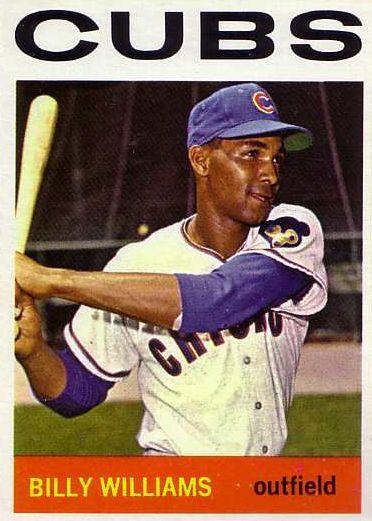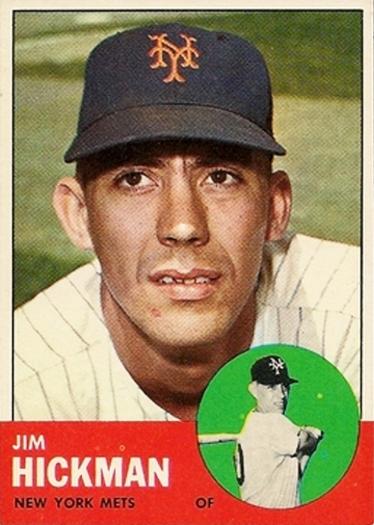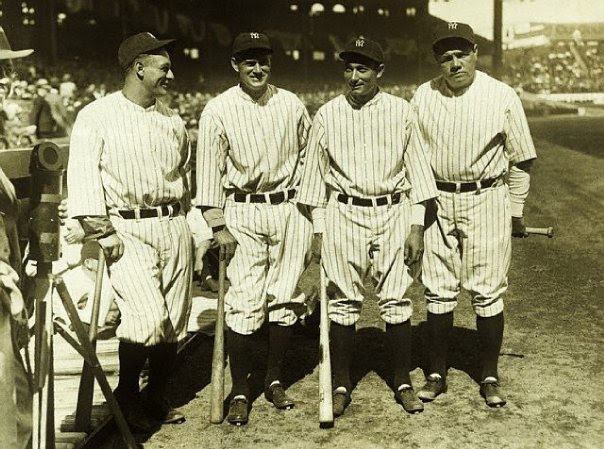Hitting For The Cycle – Part 2
In this, the second of a three-part series, I will define a “natural cycle” and highlight a few of the players who have hit them. Natural cycles occur when the player hits the single first, the double second, the triple third and the home run last. My research revealed this has been done fourteen times during the modern baseball era (1901 to date). Ladies and Gentlemen, that’s rare! Here are a few words on some of the players who have hit for a natural cycle.
 Billy Williams, seen here in his Topps 1964 card, was a model of consistency during his eighteen years in the major leagues. For proof, look no further than the 1,117 consecutive games he played from 1962 to 1971. He was the 1961 National League’s Rookie of the Year when he hit for an average of .278 with 25 home runs and 86 runs batted in. On July 17, 1966, Williams hit for the natural cycle in a 7 to 2 victory against the St. Louis Cardinals. His best year came in 1972 when he hit 37 home runs, knocked in 122 runs batted in and won the National League’s batting championship by hitting .333. Billy Williams was inducted into the Baseball Hall of Fame in 1987.
Billy Williams, seen here in his Topps 1964 card, was a model of consistency during his eighteen years in the major leagues. For proof, look no further than the 1,117 consecutive games he played from 1962 to 1971. He was the 1961 National League’s Rookie of the Year when he hit for an average of .278 with 25 home runs and 86 runs batted in. On July 17, 1966, Williams hit for the natural cycle in a 7 to 2 victory against the St. Louis Cardinals. His best year came in 1972 when he hit 37 home runs, knocked in 122 runs batted in and won the National League’s batting championship by hitting .333. Billy Williams was inducted into the Baseball Hall of Fame in 1987.
Outfielder Jim Hickman hit for his natural cycle with the 1963 New York Mets. I remember that year very well. I was an enthusiastic twelve-year-old fan who was thrilled to see my team improve significantly over the previous season, making the transition from horrendous to horrible. Hickman was an everyday player and although not a superstar, was far from an easy out. His major league career lasted thirteen seasons, six of which came in Chicago where he was Billy Williams’ teammate on the Cubs. His natural cycle came on August 7, 1963, when the Mets beat the Cardinals, 7 to 3. He appears here on his 1963 Topps baseball card.
Outfielder and pinch-hitter Bob Fothergill, shown in this Chicago Daily News photograph from his 1922 rookie season, posted an excellent .325 career batting average during his twelve major league seasons, most of them spent with the Detroit Tigers. On September 26, 1926, Fothergill hit for the natural cycle as the Tigers defeated the Red Sox by a score of 11 to 2. Fothergill was a heavy-set man who gained weight as his career unfolded. However, this didn’t prevent him from being successful in 42 out of 52 stolen base attempts.
Kenny Boyer returns from Part 1 of this series because the last of his two cycles was a natural one. It came on June 16, 1964 in a 7 to 1 victory over the Houston Colt 45’s at Colts Stadium. What I found most interesting about this game as a result of my research was not Boyer’s accomplishment as much as the team’s record at the time. Out of the ten teams in the National League at that time, the Cardinals were in eighth place, and had won 29 games while losing 31. They straightened themselves out in the second half of the season on the way to the World Series Championship.
The 1927 New York Yankees may have been the greatest baseball team of all time. The tore through the American League during the regular season and easily dispatched the National League Champion Pittsburgh Pirates in a four-game World Series sweep. So fearsome was their lineup that it was called Murderers Row. This team boasted seven future Hall of Famers: Manager Miller Huggins, Pitchers Waite Hoyt and Herb Pennock, Right Fielder Babe Ruth, 1st Baseman Lou Gehrig, Center Fielder Earl Combs and Second Baseman Tony Lazzeri. The Yankees kept this team intact for many years, as you can see from the below picture, which was taken in 1931. These four were just some of the players the Yankees employed when Lazzeri hit his natural cycle on June 3, 1932, when the team defeated the Philadelphia Athletics, 20 to 12. What made this one special is that the last hit, the home run, came with the bases loaded. Yes, Lazzeri hit a grand slam to finish off his natural cycle. How amazing is that?
This concludes the second part of this series. Part three is on deck and will be stepping up to the plate in short order.





Comments